Carex amplifolia is a species of sedge known by the common name bigleaf sedge. It is native to western North America from British Columbia to Montana to California, where it grows in wet and seasonally wet areas in coniferous forests.

Carex concinnoides is a species of sedge known by the common name northwestern sedge. It is native to western North America from British Columbia to California, where it can be found in moist or dry habitat, often in woodland and forested slopes, on silty and clay soils. This sedge produces loose clumps of stems up to about 35 centimeters in maximum height from long rhizomes. The leaves are thick but narrow, sickle-shaped, and pale green in color. Inflorescences occur at the stem tips, and some pistillate inflorescences grow from nodes along the stem. The spikelets have purplish bracts. The pistillate flowers have four stigmas on each pistil, an identifying characteristic. The fruit is coated in a sac called a perigynium, which is white to light brown in color, purple-tipped, and covered in hairs.

Carex diandra is a species of sedge known by the common names lesser tussock-sedge and lesser panicled sedge.

Carex filifolia is a species of sedge known by the common name threadleaf sedge. It is native to western North America and grows on slopes, eroded areas, gravel, and dry habitats.

Carex hassei is a species of sedge known by the common name salt sedge. It is native to western North America from British Columbia to Baja California to New Mexico, where it grows in moist places, such as meadows.

Carex hoodii is a species of sedge known by the common name Hood's sedge. It is native to western North America from Alaska to Nunavut to California to South Dakota, where it grows in dry to moist habitat in forests and on mountain slopes.
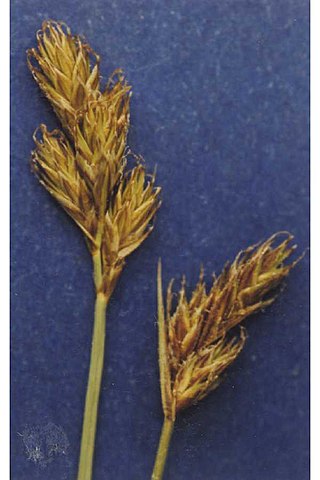
Carex leporinella is a species of sedge known by the common name Sierra hare sedge.
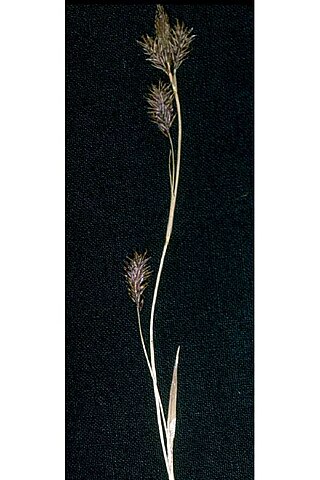
Carex luzulina is a species of sedge known by the common name woodrush sedge.

Carex pellita is a species of sedge known by the common name woolly sedge.

Carex phaeocephala is a species of sedge known by the common name dunhead sedge.
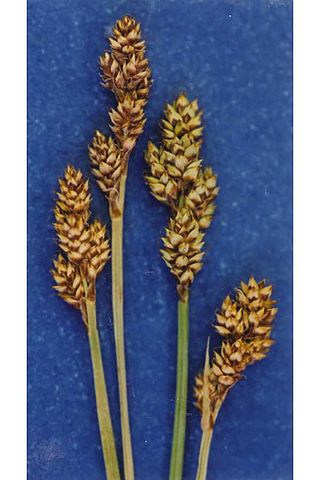
Carex praeceptorum is a species of sedge known by the common names early sedge and teacher's sedge.
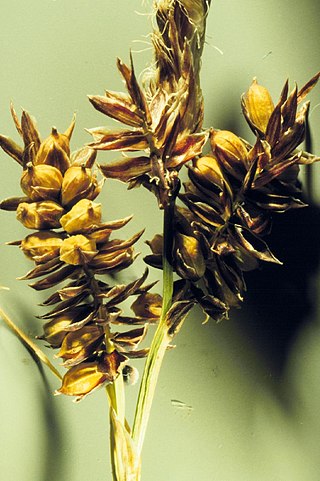
Carex raynoldsii is a species of sedge known by the common name Raynolds' sedge. It is native to western North America and grows in alpine to subalpine meadows.
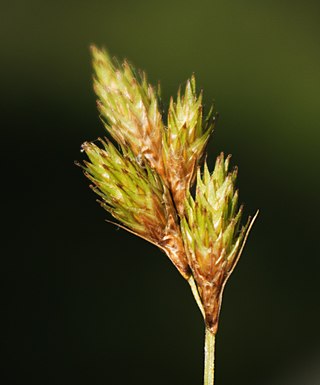
Carex scoparia is a species of sedge known by the common names broom sedge and pointed broom sedge. It should not be confused with the unrelated grass species known as "broom sedge," Andropogon virginicus.
Carex sheldonii is a species of sedge known by the common name Sheldon's sedge.
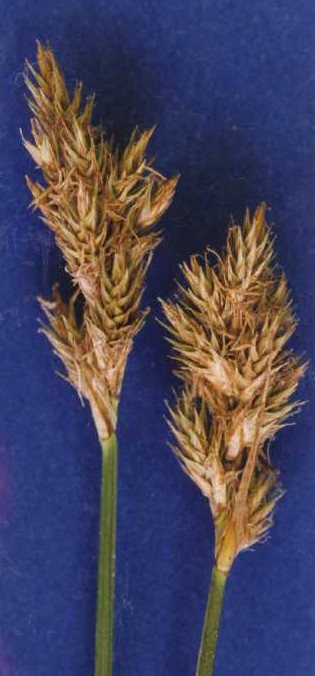
Carex specifica is a species of sedge known by the common name narrowfruit sedge.
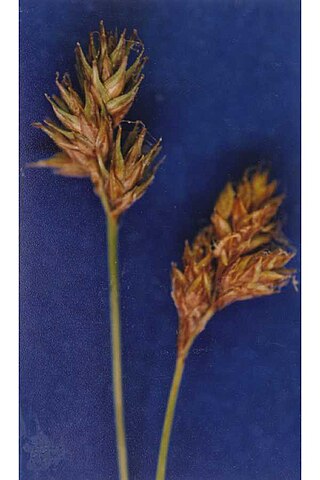
Carex straminiformis is a species of sedge known by the common name Shasta sedge.

Carex lutea is a rare species of sedge known by the common names golden sedge and sulphur sedge. It is endemic to North Carolina, where it is known only from Pender and Onslow Counties in the Cape Fear River watershed. There are nine populations. The plant was discovered in 1991 and described to science as a new species in 1994, and it has not been thoroughly studied nor completely surveyed yet. Its rarity was obvious by 2002, however, when it was federally listed as an endangered species.

Carex specuicola is a rare species of sedge known by the common name Navajo sedge. It is native to a small section of the Colorado Plateau in the United States, its distribution straddling the border between Utah and Arizona, and completely within the Navajo Nation. There are several populations but they are limited to a specific type of habitat. The plants grow from the sides of steep, often vertical cliffs of red Navajo Sandstone, in areas where water trickles from the rock. It occurs at elevations between 5,700 and 6,000 feet, usually in shady spots. Though it is not a grass, the sedge grows in inconspicuous clumps resembling tufts of grass sticking out of the rock face. When the sedge was federally listed as a threatened species in 1985, it was known from only three populations in Coconino County, Arizona, with no more than 700 plants existing. The species has since been observed in northeastern Arizona and San Juan County, Utah.
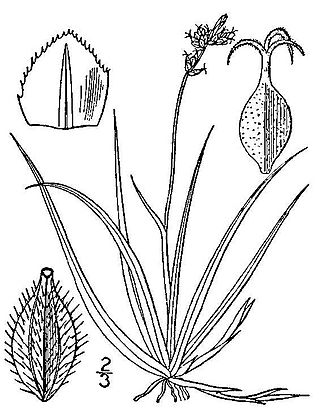
Carex concinna is a species of sedge known by the common names low northern sedge, northern elegant sedge, beauty sedge, and beautiful sedge. It is native to northern North America, where it occurs across Canada and in high elevations in the northern contiguous United States.
Carex garberi is a species of sedge known by the common names elk sedge and Garber's sedge native to North America.
This page is based on this
Wikipedia article Text is available under the
CC BY-SA 4.0 license; additional terms may apply.
Images, videos and audio are available under their respective licenses.

















